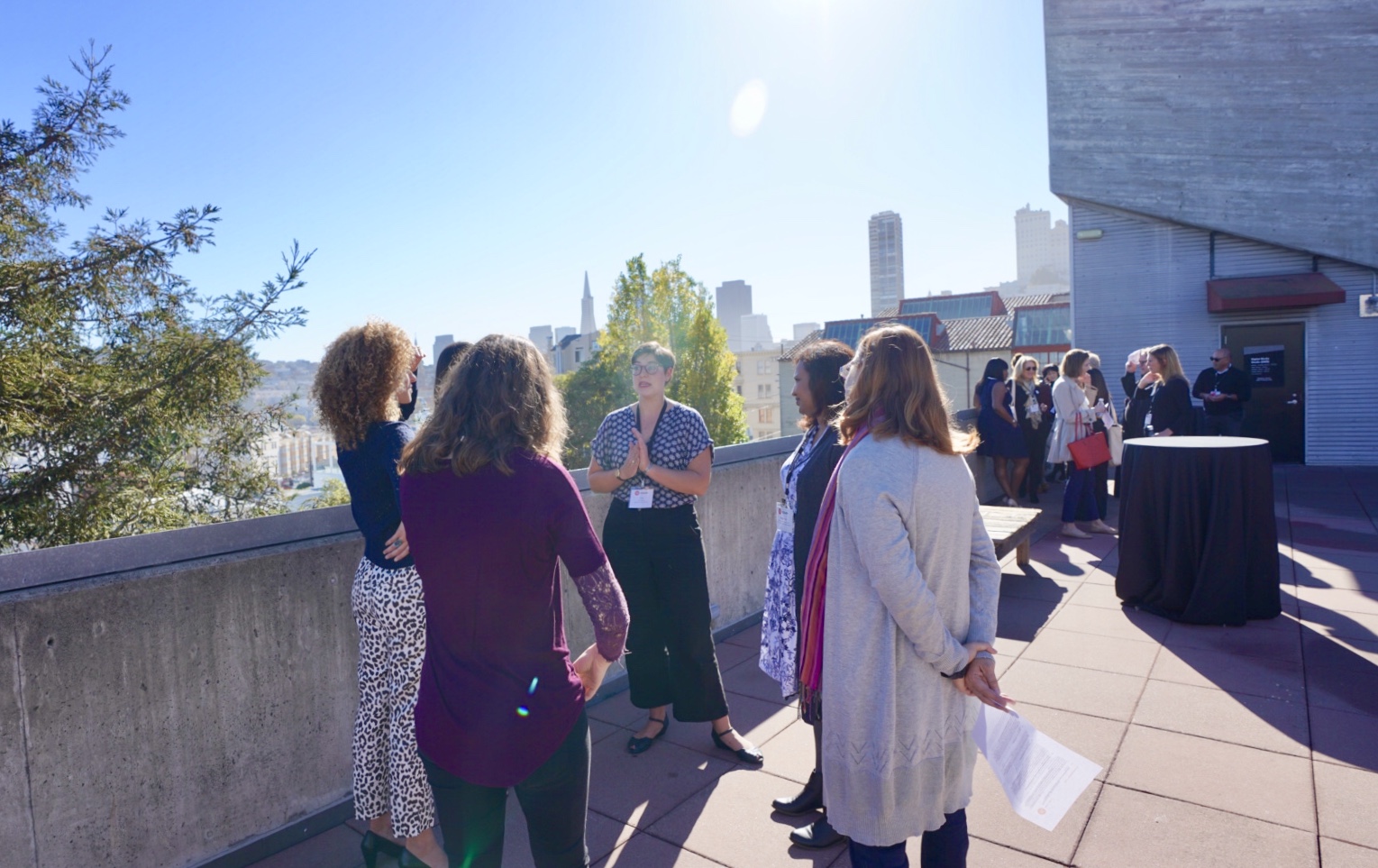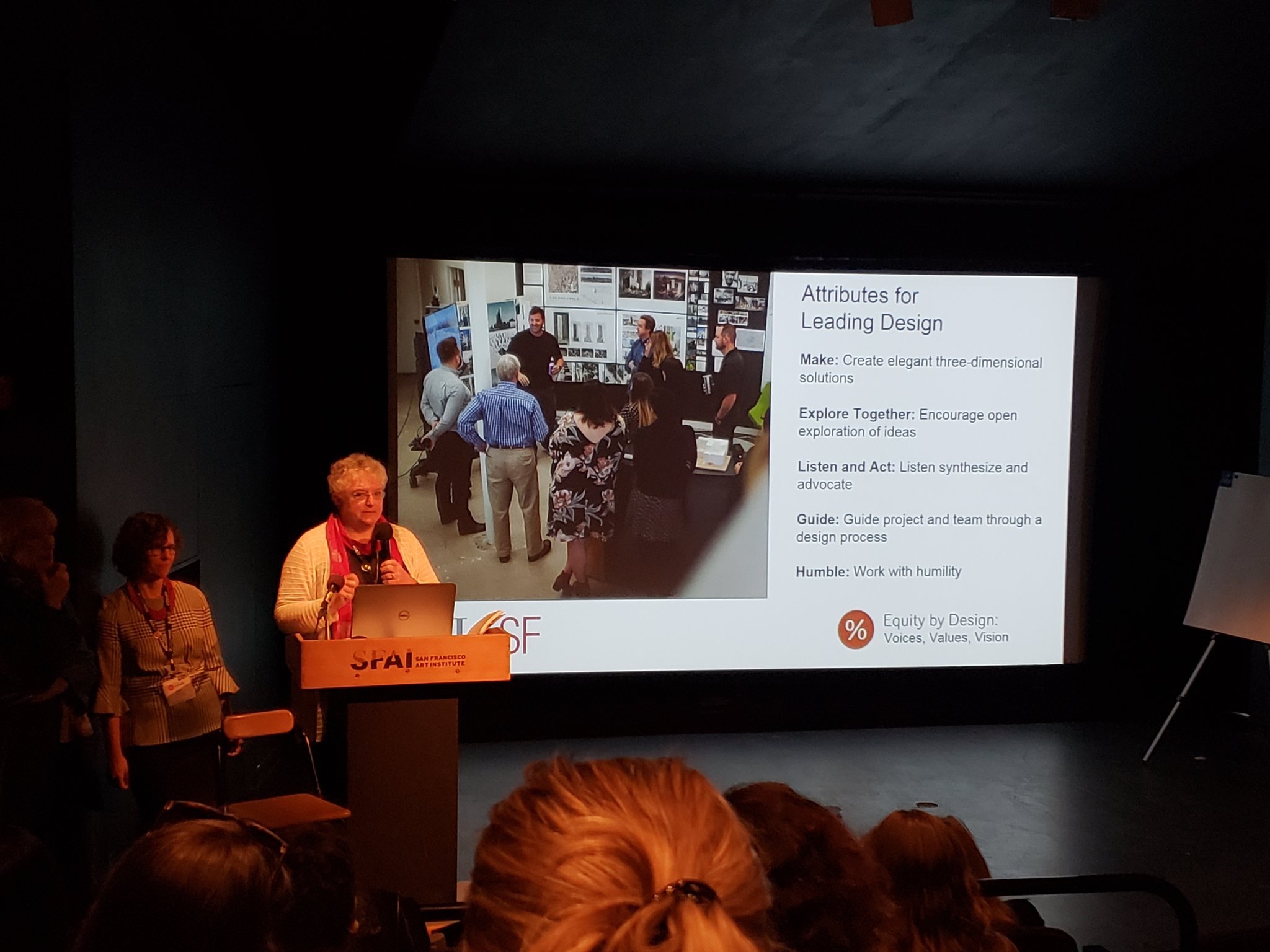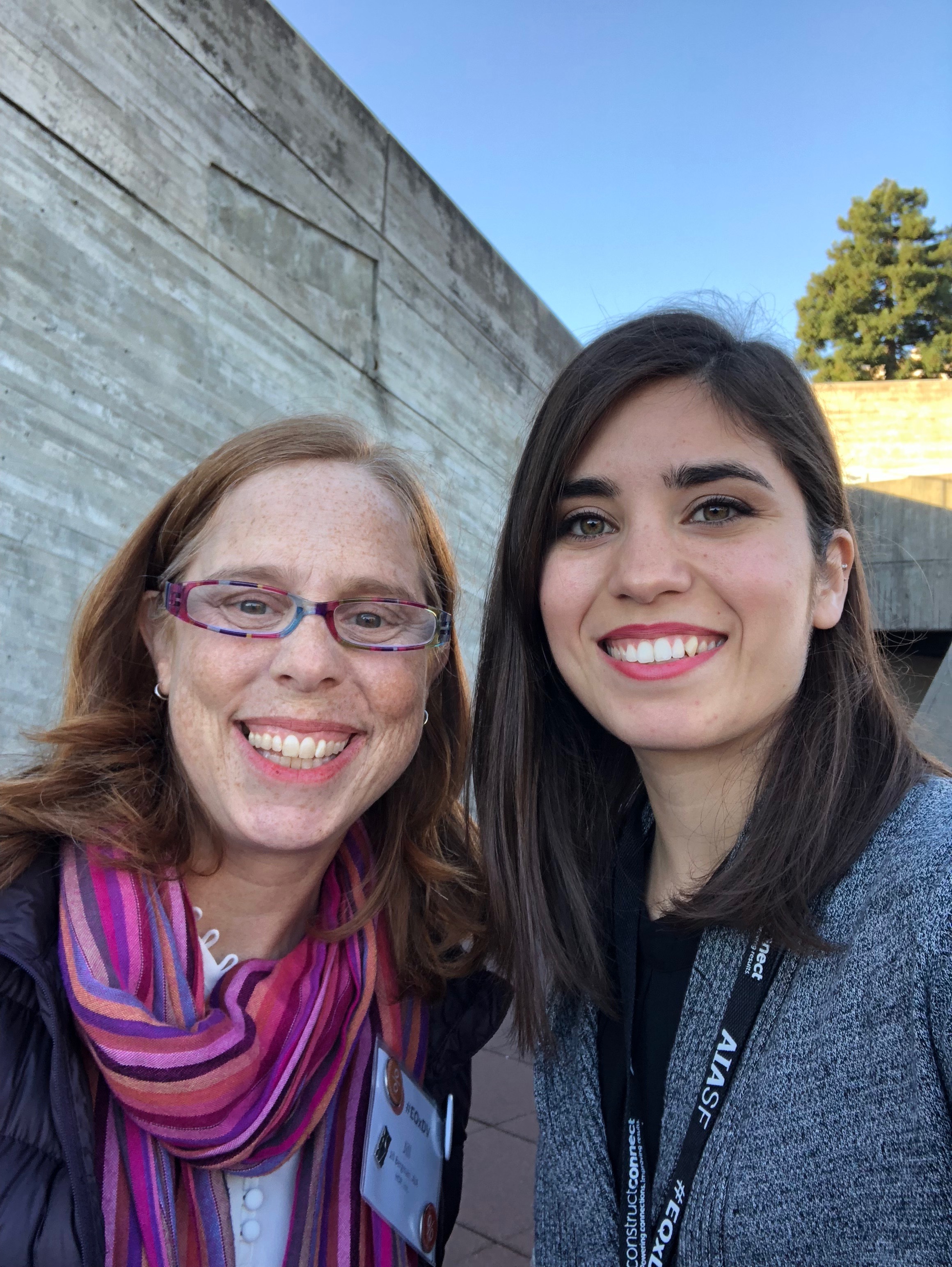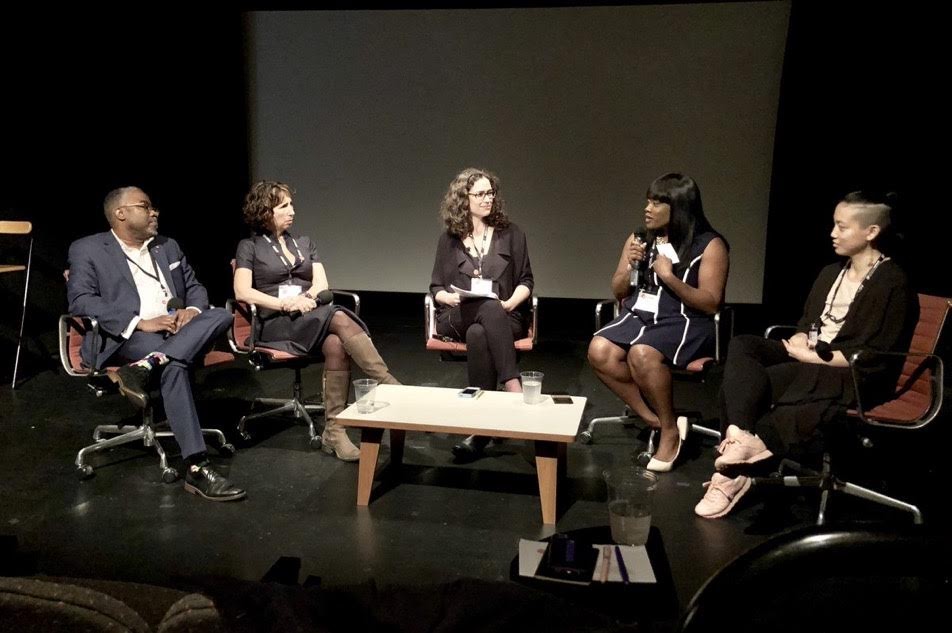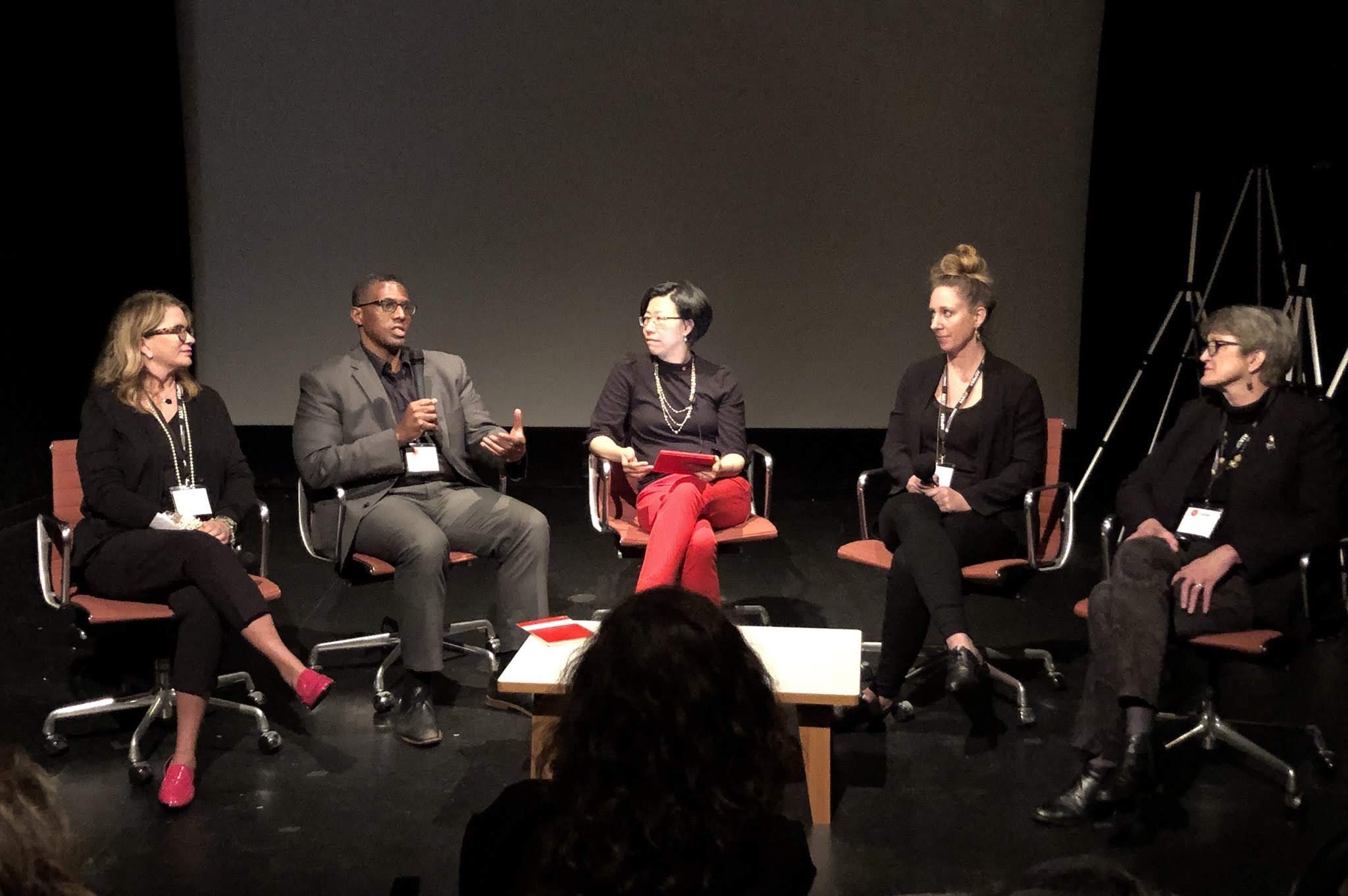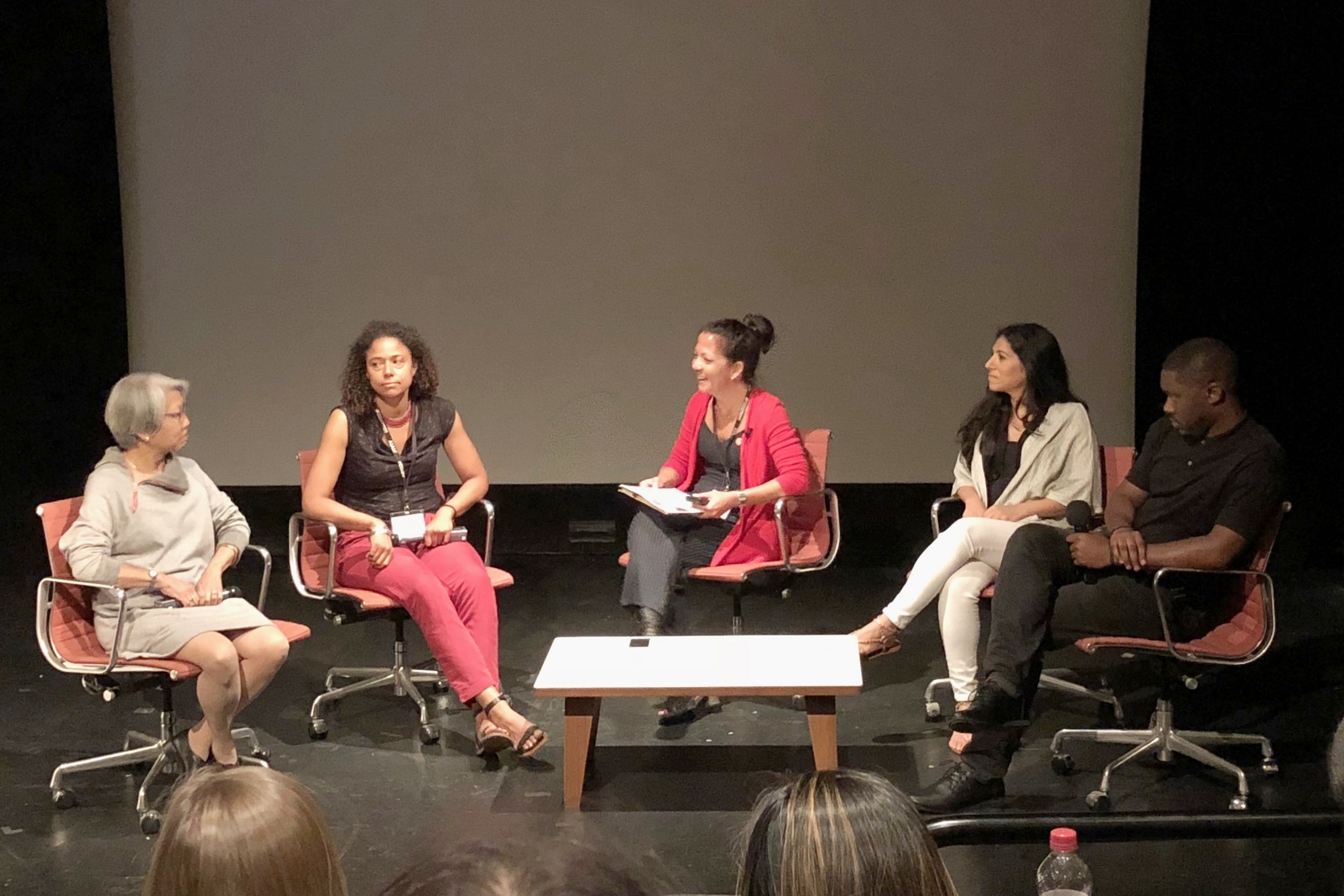Written by Itria Licitra
#EQxDV Plus One Scholarship Recipients and Mentors gathering for the first time - Photo by Andre Pennycooke
On Saturday, November 3rd, 2018, I found myself looking out over the unusually clear morning bay from the San Francisco Art Institute’s patio - the location for #EQxDV: Voices, Values, Vision Symposium. I am not a member of the architecture community, as a structural engineer, I am architecturally adjacent. I walked onto the patio - lively with the eager chatter of colleagues ready to dive into a difficult and exhausting day of conversations about a number of challenges in the field - unsure of what was to come. Much of what was said over the day was specific to the architecture field, but I was able to find a number of parallels with the engineering field and many tips and tools to inform my approach to my professional practice.
Tactical Implementation Workshop
In the afternoon I attended the “Tactical Implementation” breakout session. During the session, 4 firm leaders spoke about how they exercise and monitor equity at their workplace. After hearing from the speakers, we broke out into small groups based on company size and brainstormed what strategies of tactical implementation would look like at small, medium and large scale. There were two tactics that particularly stood out to me. The first, so simple and seemingly obvious, was to define company values then evaluate how well the company is achieving those values. Setting clear goals and defining what success looks like helps to better measure how well a company is performing with respect to predefined values. I imagine that exercises like this would also help facilitate conversations about nature and cause shortcomings. The second tactic came up a few times throughout the day, it was about how to foster a more diverse workplace. My takeaway was that recruitment should occur in the communities that you would like to see represented in your company. Be intentional about making the company accessible in those spaces.
Through the breakout sessions and the conversations that ensued throughout the day, I was struck by the strength of the community that was forming around me, the kindness and enthusiasm that people were showing towards each other and me, and the ways so many people were tackling the challenge of equity in various ways. I felt inspired by the strength of the people that spoke, willing to share their experiences with all of us and help facilitate this community. Equity by Design has provided a space, for people to come together to share similar and dissimilar experiences. This allowed people to create a network of inspiration and support that I was witness to continuously throughout the day.
Vision Panel - Photo by Rosa Sheng
I am still relatively new to the industry with just a few years under my belt. I am feeling my way around engineering and design - reconciling the things that I really enjoy with the positive and negative effects that my work has on my community. I live in the Bay Area, where it is rare that a week passes without a conversation about housing prices, gentrification or the tech industry. I cannot pretend like my work does not play a role in this climate. I participate in an industry that primarily creates spaces that are not accessible to me. There are redeeming projects and I do find value, but I would like to find a better way to exercise my skills in a more meaningful way. At the end of the day, listening to the Vision panelists speak, I felt a renewed hope that there are wholly good projects out there. I want to take the conversation they started a step further and explore how we can remove micro-aggressions from everyday projects. How can we use our power and influence to encourage owners to consider how equity can be designed and built in? I don’t know the answer, but I would like to be around to explore options and see where this conversation goes.
Photo by Andre Pennycooke
If you liked this post, please view the other posts here:
#EQxDV “Plus One” Voices: Speaking Up is Hard
#EQxDV “Plus One” The More You Do, The More You Can Do
#EQxDV "Plus One" Voices: How one day can impact your life
#EQxDV: "Plus One" Voices: Belonging Together
#EQxDV “Plus One” Voices: Change starts with Conversation and Community
